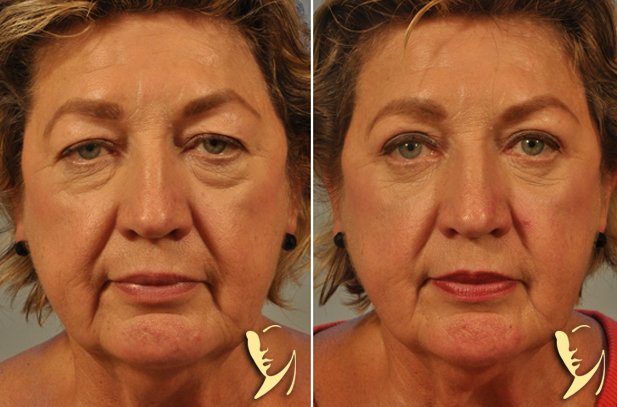This weeks’ blog shifts focus to another meticulous facial plastics procedure, the Blepharoplasty (Greek derived: blepharon which is “eyelid” and plassein which is “to form”) has its significance dating back to 25 BC-50 AD. Aulus Cornelius Celsus, a Roman Encyclopedias’, first mentioned surgery of the eyelid tissue to relax the eyelids however the actual medical term Blepharoplasty was coined by Karl Ferdinand Von Grafe in 1818. This physician developed a technique for repairing eyelids deformed by invasive cancers.
The blephroplasty, or commonly known as eyelid surgery, gained much popularity among the East Asian countries over the past 25 years. So much popularity it was or is deemed the Asian Double Eyelid operation. This procedure can be its own blog based on so much that has been written on why it is the most common cosmetic procedure performed on Asians and Asian-Americans. This will be a separate blog… Asian blepharoplasty aside however, and statistically speaking, in 2018 the blepharoplasty ranked #4 right behind the Rhinoplasty, Liposuction and Breast Augmentation at 206,529 procedures performed in the USA. Worldwide, the blepharoplasty ranks also #4 at 1,346,886 procedures performed according to the www.isaps.org. A highly sought after cosmetic procedure year after year with no signs of it waning.
Interestingly, the JAMA of Facial Plastic Surgery in 2017 proposed and conducted a research study to quantify the acceptance of the procedure from random people looking at pre-and post-operative photography and also the documented the patient’s own perceived outcome from the procedure. The study had 401 participants that looked at photographs on a web based system. The participants graded the blepharoplasty results as improving the patient’s look or not, if they looked less fatigued than before, more attractive or not, and if they looked younger. As mentioned the study also asked the patient themselves on how they perceived themselves with several questions pertaining to their results. On ALL aspects of this study, there were positive findings in both the randomized participants as well as the subjects themselves. This study alone and in my opinion really credentials the blepharoplasty for the prospective patient to read or the surgeon to discuss with a patient because the study was from a respectable body of researchers… that being JAMA-Journal of American Medical Society. They had no obligations to anyone except the science community to report the results positive or not. And to add to these findings, this was the largest study of its kind to date in this particular subject.
The blepharoplasty is a surgical modification of the upper and/or lower eyelid, by removing excess skin or fat from the lids. The reasons for the procedure range from a partial aesthetic standpoint from gravity and the natural aging process causing a drooping eyelid, to a totally cosmetic augmentation aspect as in the Asian eyelid surgery. Trauma and pathology also accounts for a percentage of blepharoplasty surgery. The blepharoplasty age range is rarely in their 20’s and the majority is 35 or older. The process of obtaining a blepharoplasty is just like other consultations in that you have consultation first, then continue on to scheduling and finally the procedure itself. The consultation should be long enough for every question be asked and answered by the patient and surgeon respectively. The “Facial Plastics Surgeon” such as Dr. Robinson will show you before and after pictures of his previous patients. I say the “Facial Plastics Surgeon” in quotes because plastic surgeons do not always continue their training on to the facial plastics board certification. There is a difference. Dr. Robinson does have hundreds of blepharoplasty procedures completed under his surgical belt. So please do diligence in your research.
According to the American Society of Plastic Surgeons, the average cost for a blepharoplasty surgery was approximately $3163. However, there is a variance in fees due to location, the surgeons experience and the difficulty due to the situation.
The downtime of blepharoplasty is 7-10 days before returning to activity and work. Some minimal bruising may be present the second week. Discomfort is minimal to none, and if noted usually resolves within 48 hours post. The post-op care includes no strenuous activity as well as not picking up anything heavy for 7 days.
As with all surgical procedures, there can be complications however these are exceedingly rare. These scenarios should be disclosed to you during the initial consultation so that you are completely informed.
LEARN MORE ABOUT EYELID SURGERY
VIEW UPPER EYELID BEFORE & AFTER GALLERY
VIEW LOWER EYELID BEFORE & AFTER GALLERY
CALL TO SCHEDULE YOUR CONSULTATION TODAY! 770-667-3030




